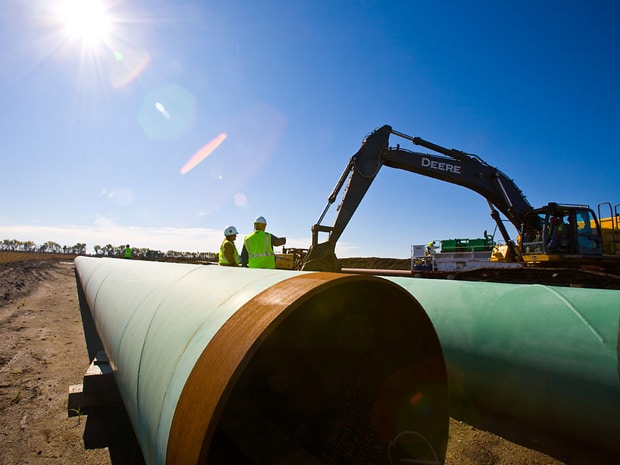The controversial Keystone XL project proposed by Canadian dirty oil giant TransCanada was dealt a potentially devastating blow on its quest for federal approval after the U.S. Environmental Protection Agency (EPA) blasted the State Department’s draft analysis on the pipeline’s environmental impacts. The EPA calls the State Department’s revised draft assessment “insufficient”.
EPA identified a laundry list of omissions in the State Department’s Supplemental Draft Environmental Impact Statement (SDEIS), ranging from lack of adequate consideration for oil spills and impacts on low income and First Nations communities, to lifecycle greenhouse gas emissions and impacts on water and wildlife. They also provided a list of critical areas that need expansion in the Final EIS.
The EPA’s analysis raises considerable concerns about the proposed project that would carry 900,000 barrels of tar sands oil per day from Canada, through Montana, South Dakota, Nebraska, Kansas, Oklahoma, and Texas, and across numerous water bodies including the Yellowstone, Missouri, Neches and Red Rivers, as well as the Ogallala aquifer.
The State Department is again in hot water for neglecting a thorough analysis of the Keystone XL pipeline, and now has received a second failing grade from the EPA.
According to EPA’s assessment, the State Department failed to provide the necessary analysis and information to respond to concerns raised in the first Draft Environmental Impact Statement (DEIS). Based on their recommendations, the State Department needs to:
- Improve analysis of community impacts along the pipeline and those adjacent to refineries. In particular, many of the communities that would be affected have limited emergency response capabilities and are therefore more vulnerable to impacts from spills. The groups most likely to be affected are minority, low-income and Tribal communities along the route. The State Department’s assessment that there are no adverse impacts to minority or low income populations located near refineries is also problematic. Many of these communities are already burdened with large numbers of high-emitting air pollutants and clearly the additional 830,000 barrel a day pipeline would have effects on emissions.
- Improve TransCanada’s spill detection systems: Relying solely on pressure drops and aerial surveys to detect leaks may result in smaller leaks going undetected for some time resulting in potentially larger spill volumes. They also recommend that the EIS consider additional measures to reduce the risks of undetected leaks including ground-level inspections, and aerial patrols.
- Provide additional information on the feasibility of alternative pipeline routes to reduce the impacts to the Ogallala acquifer by re-routing the line so it does not cross the acquifier. If a spill did occur, the potential for oil to reach groundwater in these areas is relatively high, and crude would remain in the environment for decades.
- Provide more information on global warming pollution: The EPA believes annual lifecycle GHG emissions to be even higher than the State Department’s 12 to 23 million metric ton estimate. That’s a big difference when you consider that over the pipeline’s lifespan, over one billion metric tons of global warming pollution could be produced. The draft analysis fails to use social cost of carbon estimates to analyze the damages that would be caused by that much pollution.
- Account for wetlands destruction: There will be several hundred acres of wetlands affected along the pipeline route.
- Document risk to migratory bird populations: The pipeline project puts numerous species of migratory birds at risk, and recommends more information on the potential impacts to specific migratory species, and an emphasis on already-vulnerable species.
Based on the EPA’s review, they categorize the State Department’s Environmental Impact Statement as “Category 2”, meaning it contains insufficient information for the EPA to make an assessment.
The State Department’s shortcomings could lead to a decision to transfer the pipeline decision to the White House. According to Solve Climate News, when an environmental impact statement receives an adverse review like this, a federal agency can force a review by the Council on Environmental Quality (CEQ), part of the executive office of the president.
As the EPA keeps giving the State Department a failing grade, will the Obama administration finally recognize the fatal flaws of the misguided tar sands pipeline?
Subscribe to our newsletter
Stay up to date with DeSmog news and alerts







